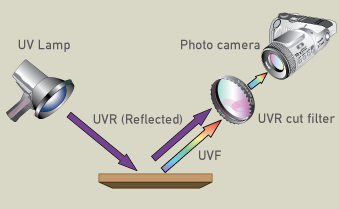Ultraviolet light, Ultraviolet Fluorescence (UVF) and Ultraviolet Reflectography (UVR)
Varnish retouches
Organic compounds can easily be detected under UV light. This effective tool detects later restorations that appear darker than the aged original varnish layers. UVF can reveal the presence of natural resin varnishes, as these often fluoresce under UV light. It is also possible to identify any retouchings on top of an aged varnish, since oil paint and newer varnish do not fluoresce under UV. Retouchings therefore appear as dark patches on the varnish surface.
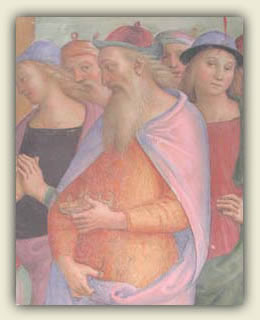
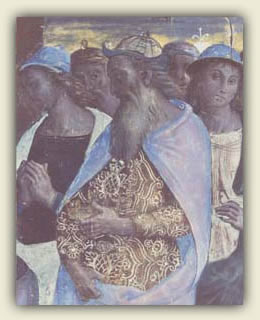
|
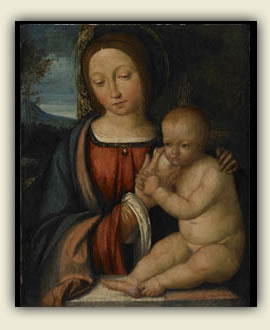
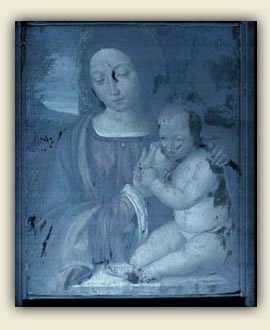
|
||||||||
Pigments and binders
Certain pigments and binders fluoresce with different colors under UV, which can be helpful in restorations. As seen below, UVF can sometimes reveal details which, due to the degradation of materials, can’t be seen with visible light. UVFC, which is a variation of UVR, is also useful in order to spot different pigments that look alike in the visible range.
Discover why UV is a practical tool in understanding a painter’s methods.

VIS, IRFC, and UVFC can each uncover revealing information about the pigments an artist uses. From left to right, you can see a visible image of the whole painting followed VIS, IRFC, and UVFC images of a detail. How does the UVFC image differ from the VIS and IRFC images? What does that tell you about the pigments that the artist used?
Elisabeth Chaplin, Mercato, 1930, Galleria d'Arte Moderna Palazzo Pitti, Florence.
How do painters achieve their effects? How do they mix or overlap pigments in order to get a particular result? Each painter develops his or her own techniques based on the materials available as well as the contemporary practices of their time. Discovering the techniques of master artists throughout history is beneficial to both art historians and contemporary artists. Art historians are eager to learn about old artists’ techniques because the information enables them to authenticate a work of art. Contemporary artists crave this information because they would like to recreate the effects of Old Masters’ secret techniques.
Let’s try to understand how Elisabeth Chaplin, in her 1930 painting, Mercato, rendered the highlighting for a white shirt on an elegant street trader. Chaplin succeeded in making an already white shirt a bit more white when you look at it from different angles, which was no easy task. How did she do this?
An infrared false color (IRFC) image typically distinguishes different pigments that appear the same to the naked eye. In this case, the tones of light blue reinforce that the shirt is painted with the same pigment. However, a UV false color (UVFC) image, using a black light, reveals the artist’s pigments. You clearly see two different pigments for the left and right side of the shirt. The artist has in fact used zinc white, which appears bright yellow in the reflected UV false color restitution, as a base color, and has instead highlighted the areas most in relief with another white pigment, which remains white in reflected UV image.
|
Choose: |
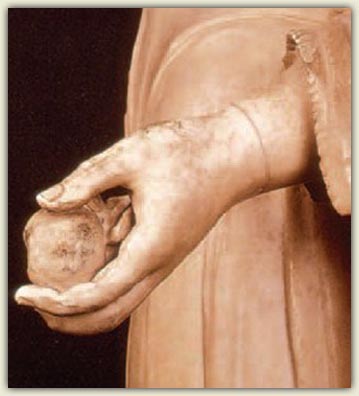
|
What does UVF lighting reveal about this statue? Life-size marble statue,Venus Genitrix, Louvre. Left, visible. Right, UVF. |
|

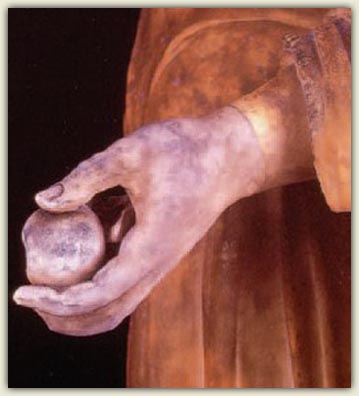
Discover original parts in old statues through UVF
Is it possible to distinguish the original parts of an ancient marble statue from later replacements?
Look at the left hand of the Venus Genitrix as seen with a UV lamp. All of the old marble surfaces appear amber, except for the left hand, which appears purple. The purple fluorescence strongly suggests that the hand is a replacement.
How it works
Art curators use ultraviolet (UV) light as a surface identification technique. They rely on the fact that UV light, which is invisible to the human eye, can induce visible fluorescence in some materials. This imaging methodology is called ultraviolet fluorescence (UVF). Most UV examination lights, or black lights, emit wavelengths in the 350-360nm region (UVA).
It’s easy to set up your own UVF experiment. Shine a UV lamp at around 45 degrees to the art being examined. Then, use a digital camera equipped with a cut UV filter to take a picture. The result? Visible UV fluorescence.
|
Learn how to set up your own UVF experiment. The UV light (about 360nm) strikes the painting and is then partly reflected and partly absorbed and re-emitted in the visible range (UV Fluorescence). A digital camera can record the UV reflected light. |
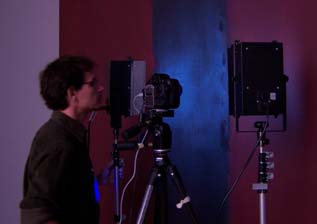
A UVF examination of a painting using two UV lamps at 45 degrees. |
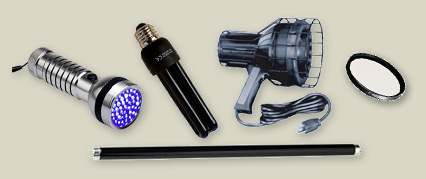
UV lamps are cheap and come in many shapes and sizes. A UV cut filter is a common photographic accessory.
The experimental set up for the UVR is identical to the UVF except that you substitute a VIS cut filter for a UV cut filter. The result will be a monochromatic image of the UV reflected from the painting. A more powerful variation of the UVR method is UV false color (UVFC). In this technique, a UVR image is combined with the visible image. Specifically, the monochromatic values of the reflected UV are inserted in the blue channel, while those relative to the blue and green components are inserted in the green and red channels, respectively.
| UV False Color | Channels |
| Green from visible image | R-red |
| Blue from visible image | G-green |
| UVR monochromatic | B-blue |
Technical details
In order to set up your own lab, you’ll need two UV lamps, a digital camera, and a UV cut filter. UV lamps are referred to as "black light" or "BL" in most lighting catalogs, and may come in the form of beehive lamps, fluorescent tubes, or LEDs. Prices start at less than $10. You can purchase a UV cut filter at any photography shop (ask for a skylight filter) .

